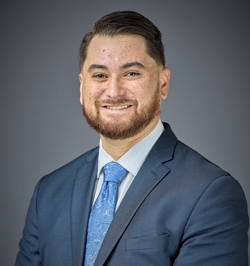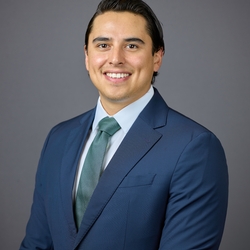OSHA Issues Emergency Temporary Standard to Protect Healthcare Workers from COVID-19
Contact Clara (C.B.) Burns, Charles C. High, Jr., Michael D. McQueen and Gilbert L. Sanchez -
June 17, 2021
In January, President Biden issued an Executive Order declaring the health and safety of workers – and in particular healthcare workers – a national priority and directed the Occupational Safety and Health Administration (OSHA) to take action to reduce the risk of COVID-19 in the workplace. That action has now come in the form of an Emergency Temporary Standard (ETS) aimed at protecting workers in healthcare settings where suspected or confirmed COVID-19 patients are treated and, thus, are most at risk of the COVID-19 hazard.
The ETS applies to employees in workplace settings such as hospitals, nursing homes, assisted living facilities, emergency responders, home health care settings, and ambulatory care facilities where suspected or confirmed COVD-19 patients are treated. The ETS exempts fully vaccinated workers from masking, distancing, and barrier requirements when in well-defined areas where there is no reasonable expectation that persons with suspected or confirmed COVID-19 will be present. OSHA released the following flowchart to determine whether an employer is covered by the ETS: “Is your workplace covered by the COVID-19 Healthcare ETS?”
The ETS requires covered employers to develop and implement COVID-19 plans that use multiple overlapping controls in a layered approach to protect healthcare workers. Some of the key requirements imposed on employers include:
The ETS applies to employees in workplace settings such as hospitals, nursing homes, assisted living facilities, emergency responders, home health care settings, and ambulatory care facilities where suspected or confirmed COVD-19 patients are treated. The ETS exempts fully vaccinated workers from masking, distancing, and barrier requirements when in well-defined areas where there is no reasonable expectation that persons with suspected or confirmed COVID-19 will be present. OSHA released the following flowchart to determine whether an employer is covered by the ETS: “Is your workplace covered by the COVID-19 Healthcare ETS?”
The ETS requires covered employers to develop and implement COVID-19 plans that use multiple overlapping controls in a layered approach to protect healthcare workers. Some of the key requirements imposed on employers include:
- COVID-19 plan: Employers must develop and implement a COVID-19 plan that includes a designated safety coordinator with authority to ensure compliance, a workplace-specific hazard assessment, involvement of non-managerial employees in hazard assessment and plan development/implementation, and policies and procedures to minimize the risk of transmission of COVID-19 to employees. This plan must be in writing if an employer has more than 10 employees.
- Patient screening and management: Points of entry to settings where direct patient care is provided must be limited and all patients, clients, and visitors must be screened.
- Personal protective equipment (PPE): Employers must provide and ensure each employee wears a facemask when indoors and when occupying a vehicle with other people for work purposes. As necessary, employers must be provided with and use respirators and other PPE for exposure to people with suspected or confirmed COVID-19. Aerosol-generating procedures must be used on a person with suspected or confirmed COVID-19.
- Physical distancing: When possible, persons should maintain a distance of 6 feet when indoors.
- Physical Barriers: At fixed work locations in non-patient care areas where employees are unable to maintain physical distancing, cleanable or disposable solid barriers must be installed.
- Health screening and medical management:
- Employees must be screened before each workday and shift.
- Employers must require each employee to promptly notify it if employee is COVID-19 positive, suspected of having COVID-19, or experiencing COVID-19 related symptoms.
- Notably, within 24 hours, employers must confidentially notify each employee who (1) was not wearing a respirator and any other required PPE and (2) was in close contact with a person who tested positive for COVID-19. This duty to notify, however, is not triggered by the presence of a patient with COVID-19 in an area where services are normally provided to suspected or confirmed COVID-19 patients. Employers should reference the “Employer Notification Tool” which provides sample language to notify employees and other helpful information for compliance.
- Employers with more than 10 employees must provide certain removal protection benefits to employees who are required to isolate or quarantine.
- Vaccination: Employers must provide reasonable time and paid leave for vaccinations and vaccine side effects.
- Training: All employees must receive training on COVID-19 transmission, tasks and situations that could result in infections in the workplace, and relevant COVID-19 policies and procedures.
- Anti-Retaliation: Employees must be informed of their right to protection under the ETS. Employers are prohibited from discharging or otherwise discriminating against employees for exercising their rights under the ETS or engaging in any actions required by the ETS.
- Recordkeeping and Reporting: Employers with more than 10 employees must establish a COVID-19 log of all employee instances of COVID-19 without regard to occupational exposure. Work-related COVID-19 fatalities and in-patient hospitalizations must be reported to OSHA.
The full text of the ETS along with Facts Sheets, FAQs, and tools to assist employers with implementation of the COVID-19 plan is available here: https://www.osha.gov/coronavirus/ets. The ETS will become effective immediately upon publication in the Federal Register, which has not yet occurred. Once the ETS published, employers will have 14 days to comply with all requirements except those pertaining to physical barriers, ventilation, and training to which employers will have 30 days to comply.
We will continue to monitor and keep you updated on all significant changes in COVID-19 rules and regulations. Please feel free to contact Kemp Smith’s Labor and Employment Department if you need guidance and assistance.
We will continue to monitor and keep you updated on all significant changes in COVID-19 rules and regulations. Please feel free to contact Kemp Smith’s Labor and Employment Department if you need guidance and assistance.



















































